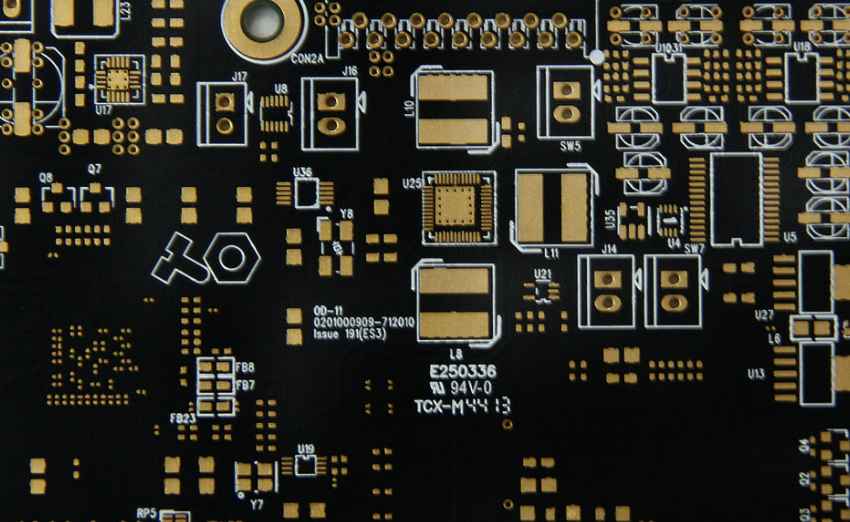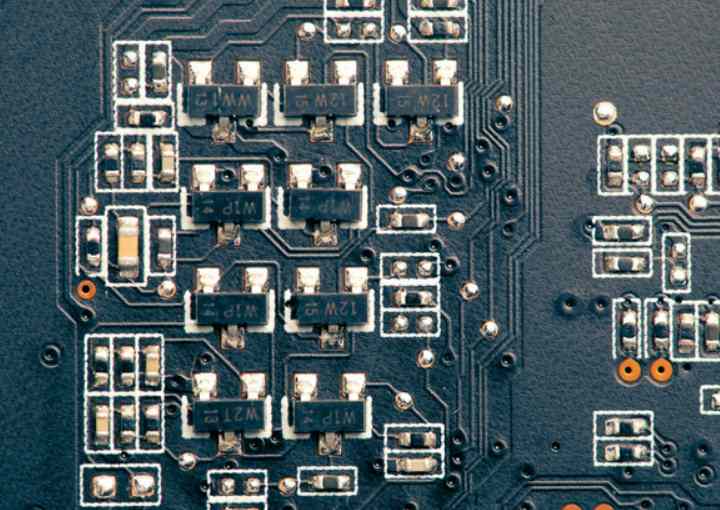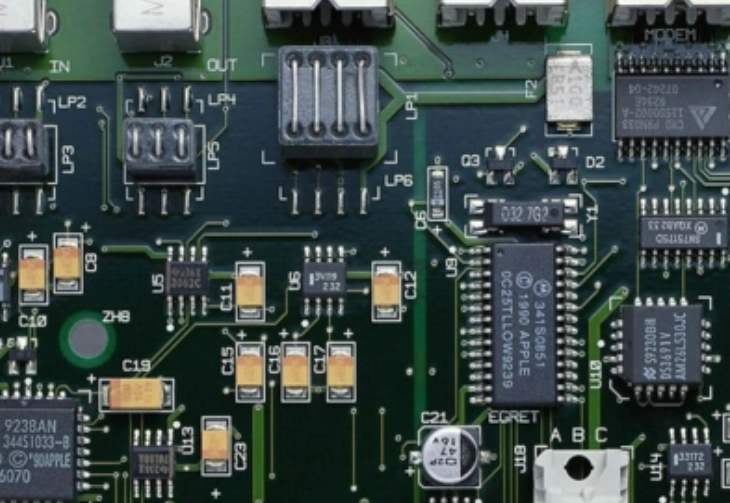
Blistering of circuit board surface is one of the more common quality defects in the production process of circuit board. Because of the complexity of PCB production process and process maintenance, especially in chemical wet treatment, it is difficult to prevent the blistering defects of circuit board surface.
The bubbling of the circuit board surface is actually the problem of poor binding force of the board surface, and then by extension, the surface quality of the board surface, which contains two aspects: 1. The cleanliness of the PCB board; 2. Surface micro-roughness (or surface energy) problem; The bubbling problem on all circuit boards can be summarized as the above reason. The adhesion between the coatings is poor or too low, and it is difficult to resist the coating stress, mechanical stress and thermal stress generated in the production and processing process and assembly process in the subsequent production and processing process, resulting in different degrees of separation between the coatings.
Some factors that may cause poor quality of the board in the process of production and processing are summarized as follows:
1. Problems of substrate processing; Especially for some thin substrate,(generally 0.8mm below), because the rigidity of the substrate is poor, should not be used to brush the plate, this may not be able to effectively remove the substrate production and processing process to prevent copper foil oxidation and special treatment of the protective layer, although the layer is thin, brush plate is easier to remove, but there are greater difficulties in chemical treatment, Therefore, in the production and processing of important attention to control, so as not to cause the poor bonding force between the substrate copper foil and chemical copper caused by the bubbling problem; This problem in the thin inner layer of blackening, there will also be bad blackening brown, uneven color, local black brown is not superior problems;
2. The surface of the board in machining (drilling, laminating, milling, etc.) process caused by oil or other liquids contaminated with dust pollution surface treatment phenomenon;
3. Copper sinking brush plate is bad: copper sinking before grinding plate pressure is too large, resulting in orifice deformation brush out orifice copper foil fillet and even orifice leakage substrate, so that in the process of copper plating, tin spraying and welding will cause orifice foaming phenomenon; Even if the brush plate does not cause leakage of the substrate, but the heavy brush plate will increase the roughness of the copper orifice, so in the process of micro-etching coarsening, the copper foil is easy to produce excessive coarsening phenomenon, there will be a certain quality hazard; Therefore, attention should be paid to strengthen the control of the brush process, the brush process parameters can be adjusted to the best through the wear mark test and water film test;
4. Washing problems: because copper plating treatment to go through a large number of chemical potion treatment, all kinds of acid, alkali, organic and other drugs more solvent, the board washing is not clean, especially copper adjustment oil removal agent, not only will cause cross pollution, but also cause the board local treatment of poor or poor treatment effect, uneven defects, resulting in some binding force problems; Therefore, attention should be paid to strengthen the control of washing, including the control of water flow, water quality, washing time, and plate dripping time, etc.; Especially in winter, the temperature is low, the washing effect will be greatly reduced, more attention should be paid to the strong control of washing;

5. Micro-etching in copper plating and graphic plating pretreatment; Excessive micro-erosion will cause the hole leakage substrate, resulting in bubbling around the hole; Insufficient micro erosion will also cause insufficient binding force, causing foaming phenomenon; Therefore, the control of microerosion should be strengthened. Generally, the corrosion depth of copper deposition before treatment is 1.5- 2 microns, and that of graphic electroplating before treatment is 0.3- 1 micron. If possible, it is best to control the corrosion thickness or corrosion rate by chemical analysis and simple test weighing method. Under normal circumstances, the surface of the micro corrosion after bright color, uniform pink, no reflection; If the color is not uniform, or reflective indicating that there is a quality hazard before processing; Pay attention to strengthen inspection; In addition, the copper content of the micro-etching tank, the temperature of the tank, the load, the content of the micro-etching agent, etc., should be paid attention to;
6. The activity of copper settling liquid is too strong; The high content of three components in the newly opened cylinder or tank of copper settling liquid, especially the high content of copper, will lead to the excessive activity of the tank liquid, the coarse deposition of copper, hydrogen, cuprous oxide in the chemical copper layer caused by excessive inclusion in the coating physical quality decline and poor binding force. Can be appropriate to take the following methods can be: reduce the copper content,(to the tank to add pure water) including three components, appropriate to improve the complexing agent and stabilizer content, appropriate to reduce the temperature of the tank;
7. The board surface oxidizes in the production process; If the oxidation of the copper plate occurs in the air, it may not only cause no copper in the hole, the surface of the board is rough, but also may cause the surface of the PCB circuit board to bubble; Copper plate in acid storage time is too long, the surface will also occur oxidation, and this oxide film is difficult to remove; Therefore, in the process of production, the copper plate should be thickened in time, and should not be stored for too long. Generally, the thickened copper plating should be completed within 12 hours at the latest;
8. Bad copper rework; Some of the copper or graphics after the rework board in the rework process because of poor fading plating, rework method is not correct or rework in the process of micro erosion time control or other reasons will cause foaming; If the copper plate rework on the line is found to be bad, it can be washed directly from the line after oil removal after pickling without corrosion directly rework; It is best not to re-remove oil, micro corrosion; For the plate that has been electrically thickened, the plating should be removed by micro-etching groove and pay attention to time control. One or two PCB boards can be used to roughly measure the plating time to ensure the plating effect. After the plating is finished, apply a set of soft grinding brushes to brush lightly and then sink copper according to the normal production process, but the corrosion time should be halved or adjusted as necessary;
9. In the process of graphic transfer, insufficient washing after development, too long placement time after development or too much dust in the workshop will cause poor cleanliness of the board, and the fiber treatment effect is slightly poor, which may cause potential quality problems;
10. Copper plating pre-leaching tank should pay attention to timely replacement, too much pollution in the tank, or too high copper content, will not only cause the cleanliness of the board, but also cause rough surface defects;
11. There is organic pollution in the plating tank, especially oil pollution, which is more likely to occur in the automatic line.
12. In addition, in winter, when the tank liquid in some factories is not heated, special attention should be paid to the live into the tank of PCB board in the production process, especially the plating tank with air stirring, such as copper nickel; For nickel cylinder in winter, it is best to add a warm water bath before nickel plating,(the water temperature is about 30-40 degrees), to ensure that the initial dense nickel layer deposition is good.









